Did you know there’s a lot of history in Pike County, Pennsylvania?
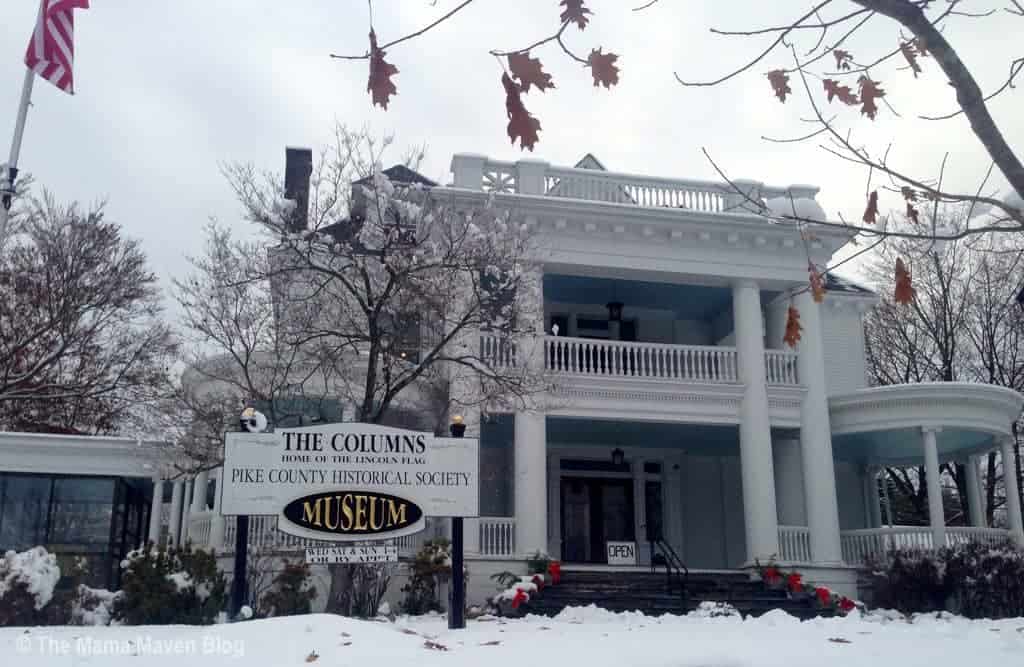
My husband hails from Port Jervis, NY, right down the road from Milford, PA. We recently visited The Columns, the Museum of the Pike County Historical Society for a special reason. Built in 1904, this beautiful Neo-Classical home was acquired by the Pike County Historical Society in 1984.
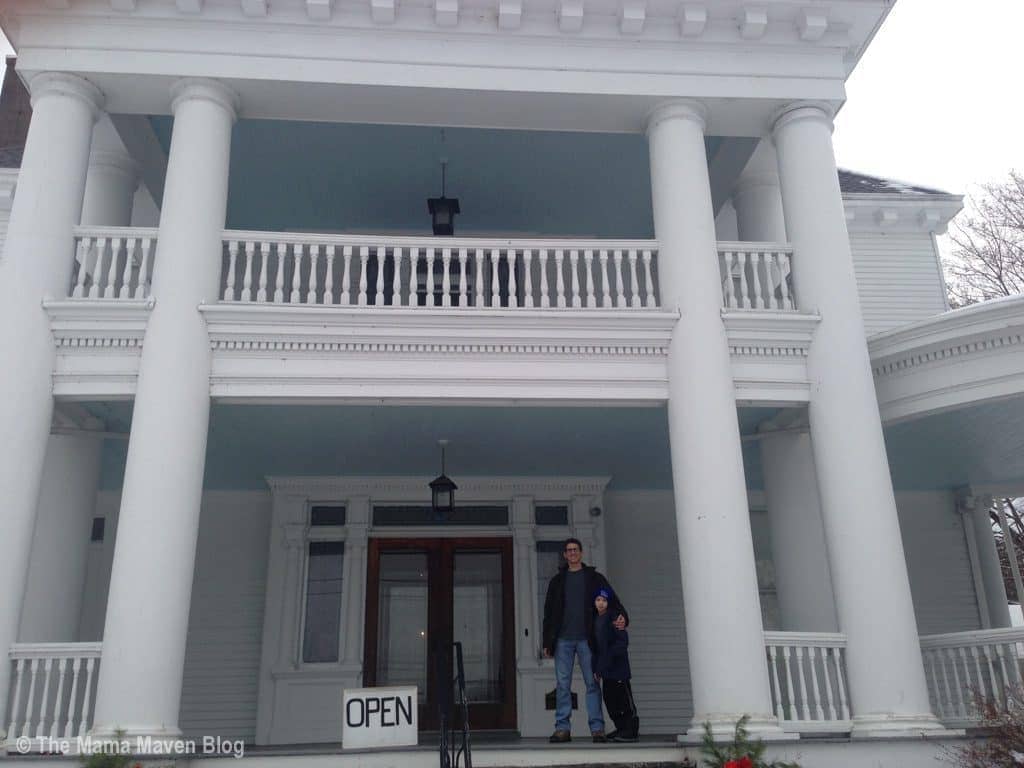
The Columns is the home of The Lincoln Flag — after President Lincoln was assassinated in 1865, the large flag that had been draped over the balustrade was used to cushion his head as he lay mortally wounded at Ford’s Theatre. The man who placed the flag under President Lincoln’s head was Thomas Gourley.
The flag was passed onto Mr. Gourley’s daughter who settled in Pike County and eventually donated to Pike County Historical Society in 1954. It was authenticated and is on permanent display.
The Pike County Historical Society offers exhibits of military memorabilia and correspondence, Native American artifacts and folklore, vintage clothing and accessories, antique musical instruments, early medical equipment and so much more.
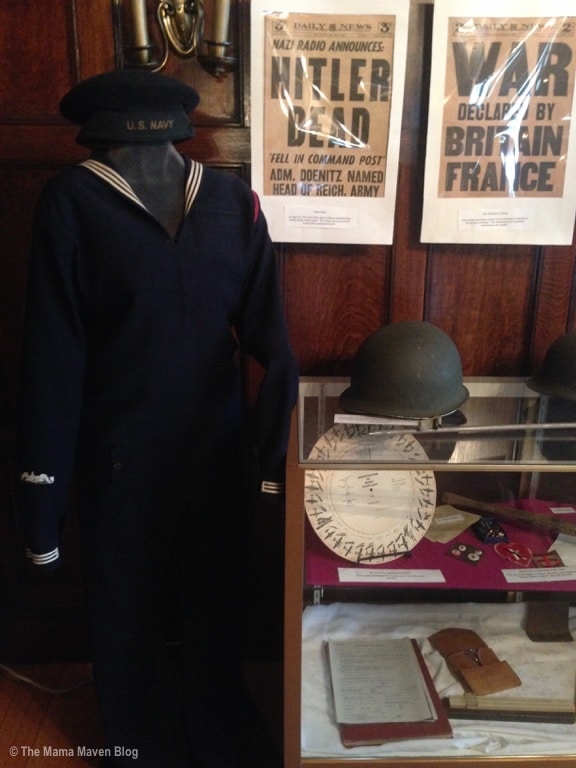
Check out the Tiffany Design Staircase Window.
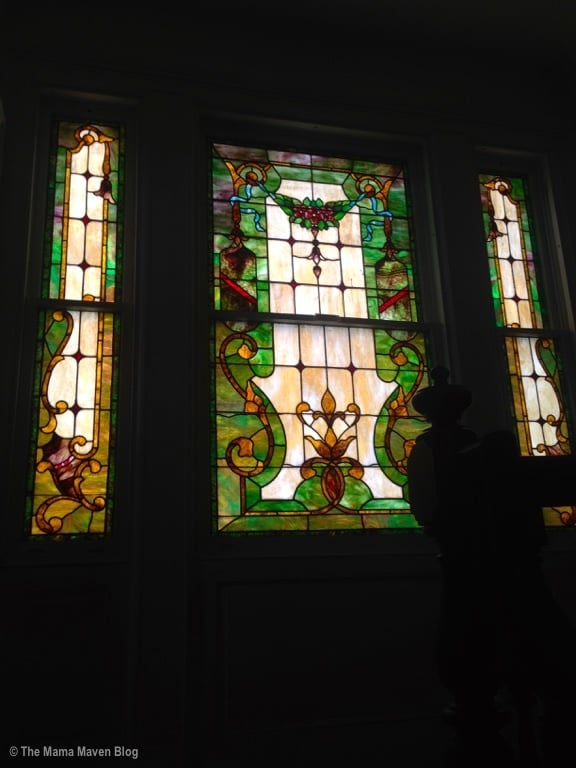

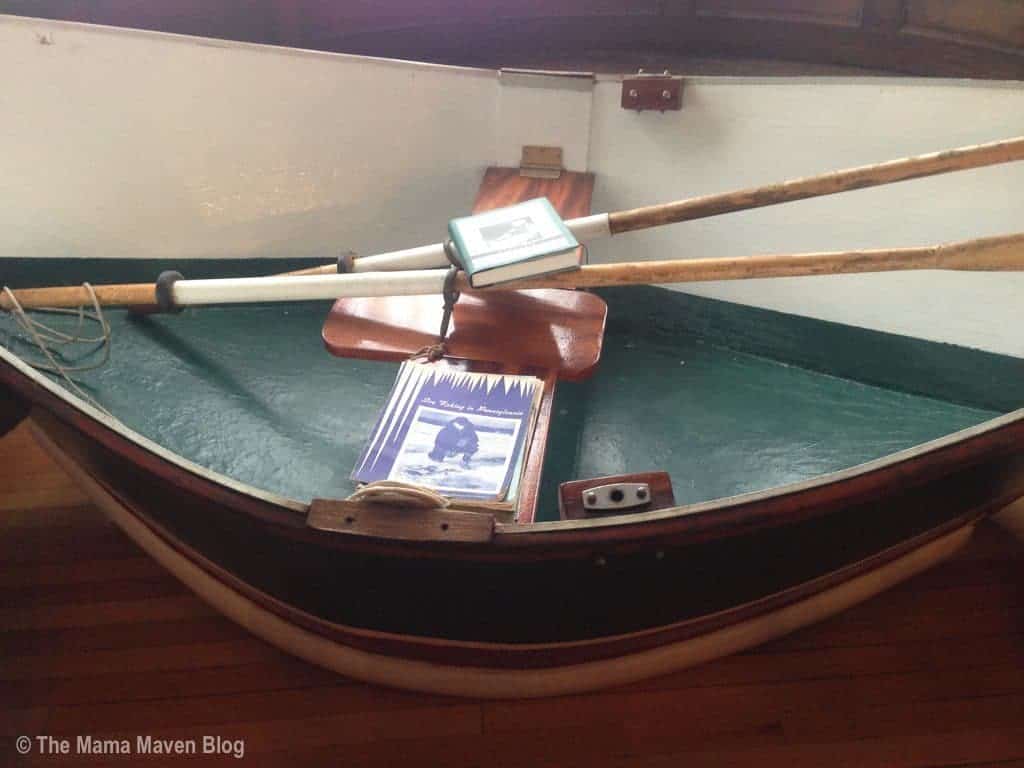
Zane Grey’s Boat
In The Columns Gift Shop, you could buy photos by local photographers. I was actually pretty pleased to see the late, great Pete Seeger’s photos. Pete Seeger, has a special connection to my summer camp, Surprise Lake Camp, in Cold Spring, NY. He played a concert there every summer, in return for help on Clearwater Sloop Boat, which has worked to clean the Hudson River since 1969. Peter Seeger has played many concerts in Milford, PA – most recently in 2013 to support Air Soil Water, an anti-fracking group.

The Late Pete Seeger
We were there to lend my husband’s painting to the Columns — his painting about the luminaries of Western Philosophy.

Luminaries of Western Philosophy by EricHorn ©EricHorn | The Mama Maven Blog
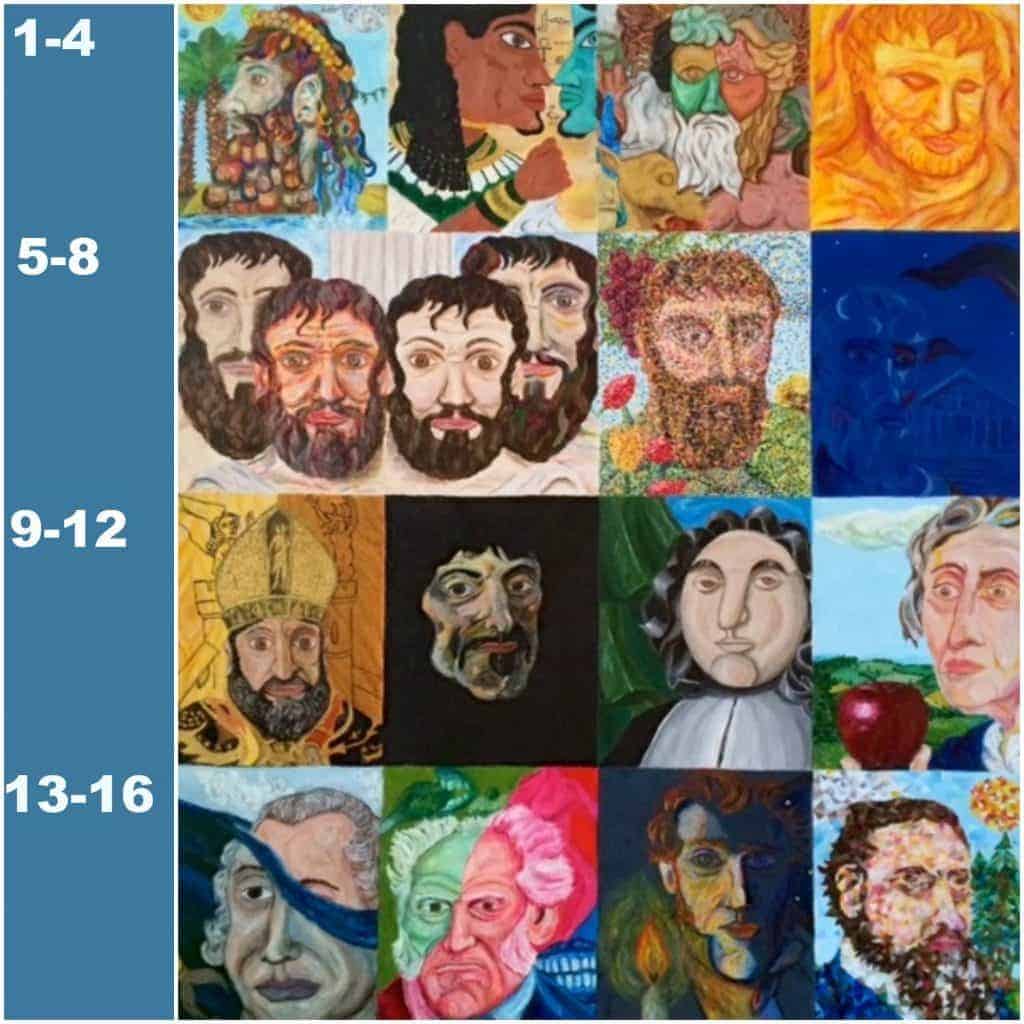
Luminaries of Western Philosophy by Eric Horn
- Sumer/Akkad (place names): An integral part of both spiritual and human works.
- Egypt: Confidently facing the afterlife.
- Abraham: Composed of the shards of broken idols.
- Heraclitus: All things composed of fire. All things in a constant flux.
- Plato and Aristotle: The forms are more real than the objects we know.
- Aristotle and Plato: The objects we know define the forms.
- Epicurus: The Universe as atoms and void.
- Zeno of Citium: The sublime constancy of cosmic order
- St. Augustine of Hippo: Humanity divided by the cities of God and man.
- Rene Descartes: Alone in the only certain truth.
- Baruch Spinoza: The equation of God and Nature represented in geometric forms.
- John Locke: Reality only known through sensation.
- (split by wave)
- David Hume (below): Our senses constantly bombarded with fleeting impressions, depicted by the rushing tide.
- Immanuel Kant (above): Our minds transcending the onslaught of perceptions through reason and coherently organizing our conceptions.
- Arthur Schopenhauer: Driven by will and desire.
- Soren Kierkegaard: The common choice between an aesthetic or ethical life. Existentialists must despair or go beyond rationality to faith.
- Charles S. Peirce: We understand through three phased interpretations of signs; impulses, analysis and evaluation.
The reason why he donated this painting is to honor Charles Sanders Peirce, who was a resident of Milford, PA and lived close by. There is a dedicated Peirce room at the Columns. Charles Peirce, one of America’s most brilliant minds, scientist, mathematician, was the founder of the philosophy of pragmatism. He had a major influence on Albert Einstein.

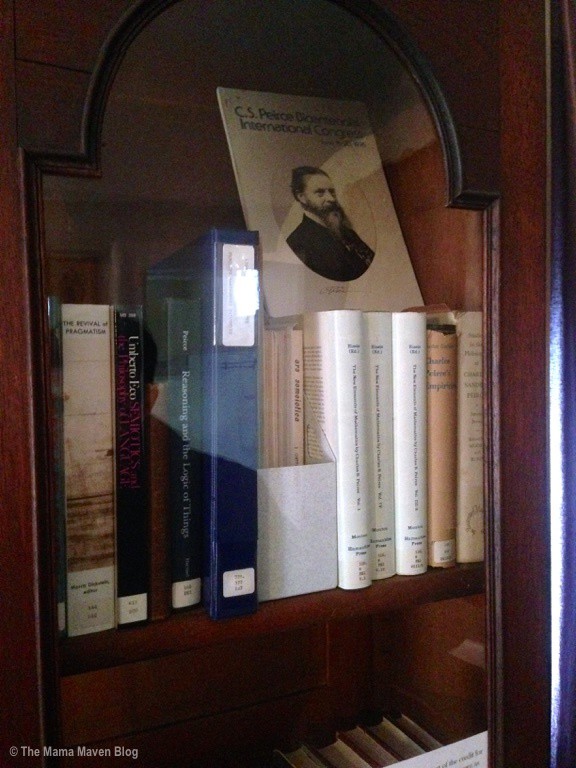

If you enjoy seeing history, then checkout The Columns (even if you aren’t a fan of Charles Peirce), our 9 year old loved seeing all the uniforms and the Lincoln Flag. We read a lot of history to him, so this was a perfect way to start conversations about World War 2 (there were propaganda posters about food rationing).. etc..
Check out The Columns, the Museum of the Pike County Historical Society.
608 Broad Street
Milford, PA 18337

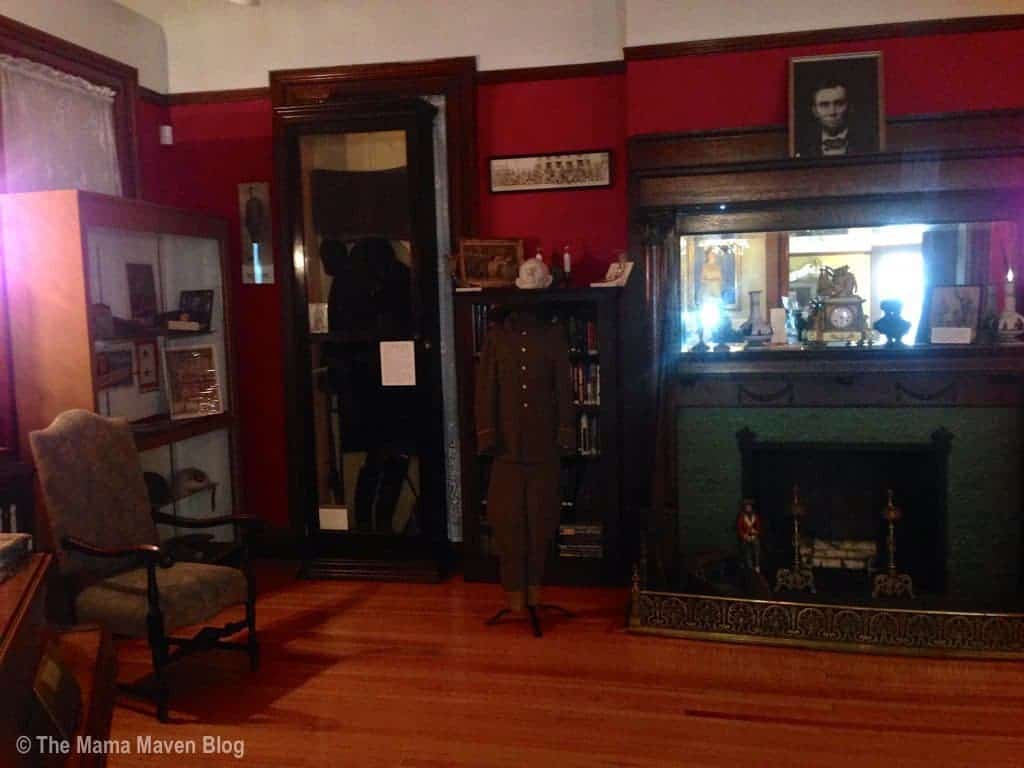




Leave a Reply